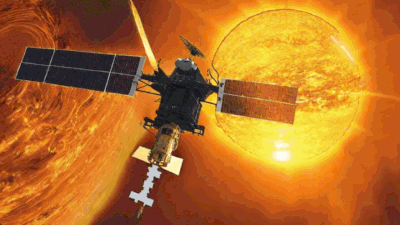Today, Aditya L1, the first solar mission of the Indian Space Research Organization (ISRO), entered its last maneuver to successfully achieve its destination and was injected into its final orbit.
ISRO Chief S Somanath told news agency ANI on Monday “Aditya-L1 is going to reach its L1 point on January 6 at 4pm and we are going to do the final manoeuvre to keep it there.”
The spacecraft will be able to see the sun without any eclipses when it reaches its destination.
Since its September 2 launch last year, the spacecraft has successfully completed four earthbound maneuvers and one Trans-Lagrangean Point 1 Insertion (TL1I) maneuver.
Roughly 1.5 million kilometers from Earth, the first Sun-Earth Lagrangian point (L1) is the mission’s focal point. From there, it will monitor the Sun’s corona and attempt to comprehend its exceptionally high temperature.
A special place where the gravitational forces between the Earth and the Sun equalize is called the Lagrange Point. The influence of other celestial bodies, like the Moon, Mars, and Venus, prevents absolute neutralization; however, the L1 point offers a stable position for observational purposes.
Dr Jitendra Singh hails Aditya L1’s success
Union Minister of State Science & Technology Dr Jitendra Singh tweets, “What a glorious turn of year for Bharat. Under the visionary leadership of PM Modi, yet another success story scripted by Team ISRO. Aditya L1 reaches its final orbit to discover the mysteries of the Sun-Earth connection.”
PM Modi congratulates ISRO on Aditya L1’s success
‘I join the nation in applauding this extraordinary feat’: PM Modi
India creates yet another landmark. India’s first solar observatory Aditya-L1 reaches it destination. It is a testament to the relentless dedication of our scientists in realising among the most complex and intricate space missions. I join the nation in applauding this…
— Narendra Modi (@narendramodi) January 6, 2024
The Sun is a very dynamic star that extends much beyond what we see: ISRO
“The Sun is a very dynamic star that extends much beyond what we see. It shows several eruptive phenomena and releases immense amounts of energy in the solar system. If such explosive solar phenomena is directed towards the earth, it could cause various types of disturbances in the near earth space environment,” said ISRO.







 Finance
Finance







